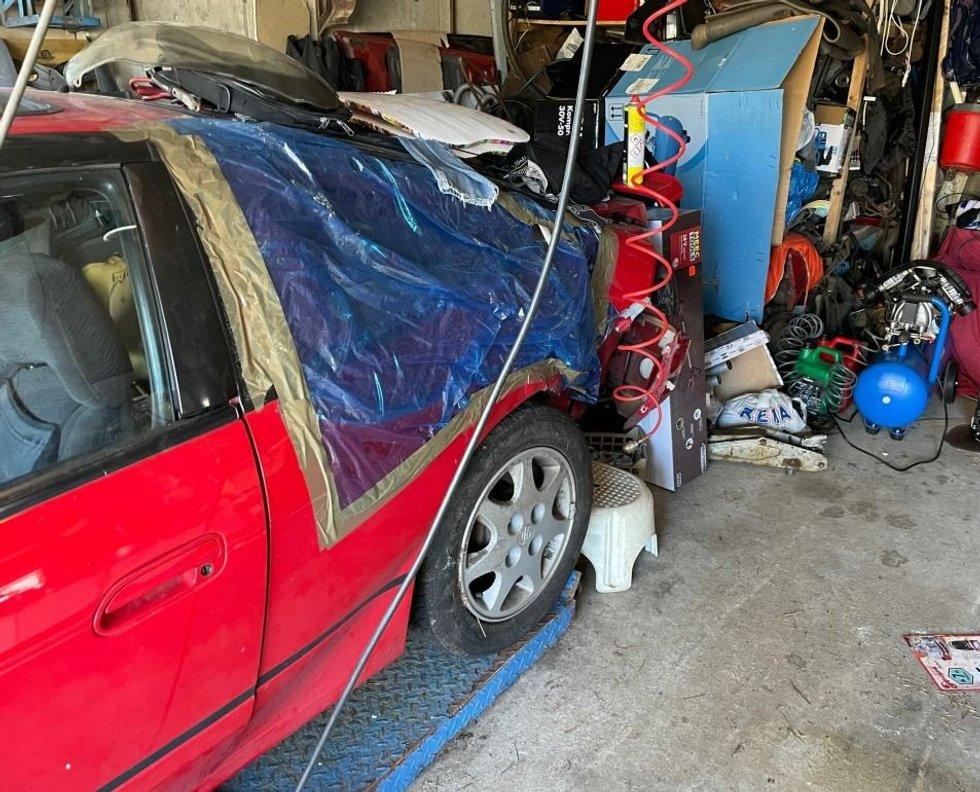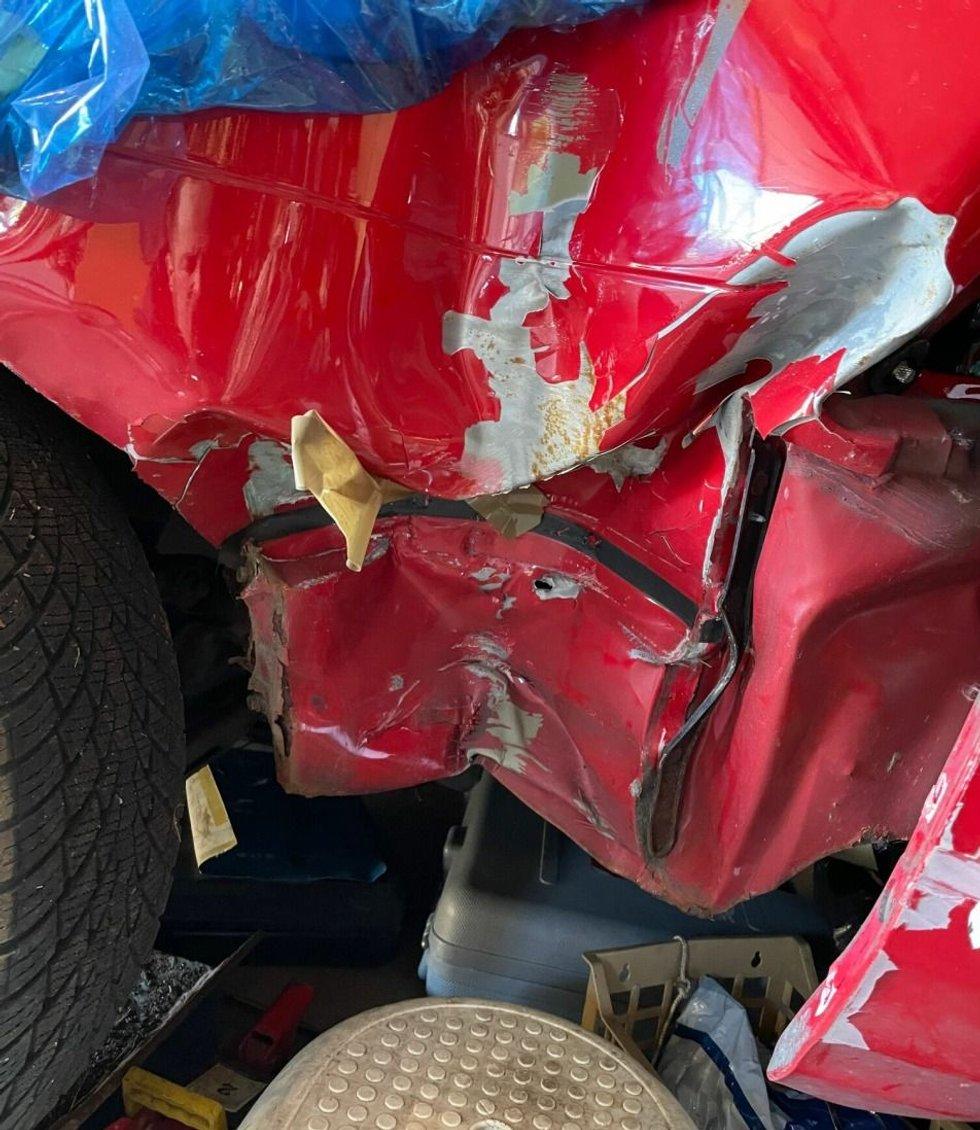Anyone who has dabbled a bit with vintage cars knows that finding parts can sometimes be very challenging. Not least this applies to the bodywork, which means that the dream car can be left standing for a while if it suffers major bodywork damage.
It is precisely this that is Glenn Bjærum’s big headache at the moment. It’s about the car he himself describes as his first, great love, a lovely red 1990 Nissan 200 SX Coupé that he bought in Sweden in 1991. At the time, the car was almost new, and it had only driven 14,000 kilometres.
How happy he is in the car can almost be read on the odometer. So far, it has rolled 250,000 kilometers. There have been very few errors and problems, but Glenn overhauled the engine in 2006. Unfortunately, he is not enjoying the car much at the moment, and here he explains why:
This is how Glenn hopes he will get it back, but for now there are parts missing. Photo: Private
—-
Around a lamppost
– Our son was able to borrow the car back to Haakonsvern from leave – a drive of around fifteen minutes – and it went well. But a few days later he was going home on another leave, and then there was a change in the weather, with rain and wind. Here it is important to remember that the Nissan 200 SX is a rear-wheel drive coupe model with a turbo engine with 200 horses. In other words, it is a vigorous car, which in any case can easily offer surprises when the friction becomes small.
And that’s what happened here. Starting at a roundabout, Junior had a slip which did not allow itself to be recovered until the car curled around a lamp post. When this happened, studless winter tires were on the car. Fortunately, it went well with the driver, who escaped the whole thing with a warning – although it was suggested that the speed may have been a little too high, Glenn Bjærum tells Broom.
 –
–
Here, Glenn thrives on holding on, but admits that the sharing problem is starting to wear on his patience. Photo: Private
—-
Mekking is therapy
– Incidentally, this is not the only time his Nissan 200 SX has suffered major bodywork damage.
– No, in 2006 the car was hit by a lorry, so that everything behind the driver’s seat was flat. I solved that easily by exchanging the body for me from a friend, so that the car I was really going to have and enjoy in the years to come was in top condition again.
For me, this is pure therapy, but now it has become a bit much. After the last crash, I got the rear position and a number of other mechanical components in place, but this with body parts has proven to be very difficult to solve, he continues.
 –
–
The encounter with the lamp post left a lot of crumpled metal. Photo: Private
—-
The goal is many nice trips
– There are certain places where something must be cut away and new must be inserted. I probably also have to get a new damper tower on the left side of the rear, together with an inner fender and wheel arch, but I’m standing still a bit – I still haven’t been able to get hold of what I need, so if anyone can help me, I’ll be eternally grateful , emphasizes Glenn Bjærum.
– The goal is to get the car 100 percent in order again, so that I can have many nice trips to look forward to in the years to come!
 –
–
– Is there anyone who can help with parts for my Nissan 200 SX, wonders Glenn Bjærum. Photo: Private
—-
Get 200 SX sold in Norway
One of the reasons why Glenn is struggling to find parts is probably that this is a model of which very few were sold in this country. The car in itself was more than tempting enough, but it was relatively expensive – and at this time, around 1990, the Norwegian new car market was almost on a broken back. Expensive sports coupés with lots of horsepower were not what most customers were looking for back then!
The Nissan 200 SX Turbo with 200 hp was a fresh car, with performance car enthusiasts nodded approvingly at just over 30 years ago. The car had a stated top speed of 226 km/h, while 0-100 km/h went away in 7.2 seconds.
With a length of 4.54 m and a width of 1.69 m, this was certainly no small car. The net weight was then also as high as 1,220 kg. The standard transmission was a 4-speed automatic, and anti-lock brakes (ABS) were standard.
Therefore, this only becomes more and more expensive
The article was first published on Broom.no.
–


